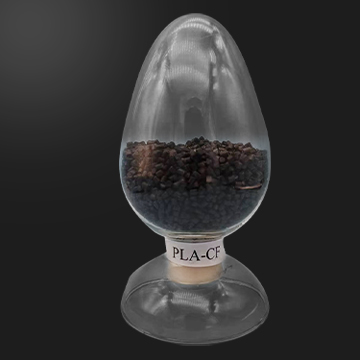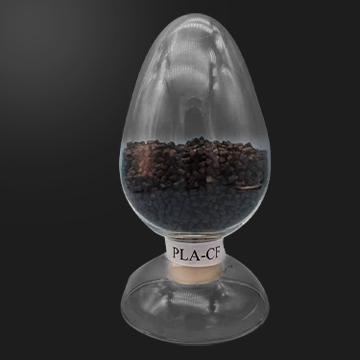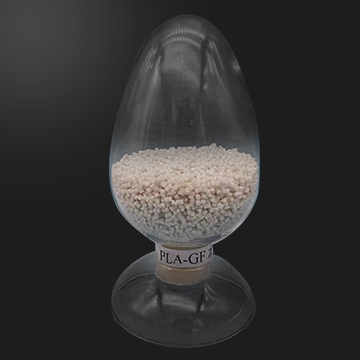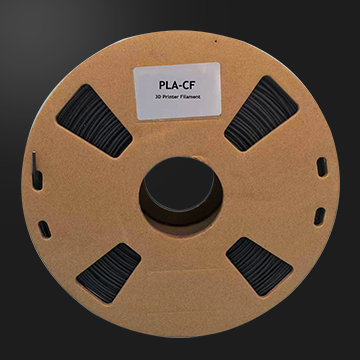



PLA-CF is a polylactic acid (PLA) material with short cut carbon fibers added. This not only enhances the stiffness of the material, but also gives the parts a matte appearance and a unique carbon fiber matte texture. The model does not show any layering, is low-key and not ordinary. PLA-GF is a polylactic acid (PLA) material with short cut glass fibers added. Compared to PLA-CF, it has higher stiffness and relatively lower cost, and the product is white with adjustable colors.
Contact Now1.PLA-CF
ForceTracer PLA-CF is a polylactic acid (PLA) material with chopped carbon fibers added . This not only enhances the stiffness of the material, but also gives the parts a matte appearance and a unique carbon fiber frosted texture. The model does not show any layering, and is low-key and not ordinary. Carbon fiber helps reduce shrinkage during the printing process, resulting in very dimensionally accurate 3D printed parts with unique surface effects. Compared with ordinary PLA materials, the physical properties of PLA-CF have been greatly improved. Compared with nylon carbon fiber (PA-CF) materials, carbon fiber PLA has lower shrinkage and water absorption. It is often used in many professional scenarios such as tooling and fixtures, machinery, drone manufacturing, and automobiles .
added . This not only enhances the stiffness of the material, but also gives the parts a matte appearance and a unique carbon fiber frosted texture. The model does not show any layering, and is low-key and not ordinary. Carbon fiber helps reduce shrinkage during the printing process, resulting in very dimensionally accurate 3D printed parts with unique surface effects. Compared with ordinary PLA materials, the physical properties of PLA-CF have been greatly improved. Compared with nylon carbon fiber (PA-CF) materials, carbon fiber PLA has lower shrinkage and water absorption. It is often used in many professional scenarios such as tooling and fixtures, machinery, drone manufacturing, and automobiles .
PLA-CF 3D printing performance parameters
performance Property | numerical value Parameter Value | unit Unit | Test Methods Test Method |
Young's modulus/Tensile modulus | 1413 | MPa | ISO 527, Type 1A |
Tensile strength/Tensile strength | 66 | MPa | ISO 527, Type 1A |
Elongation at break/Elongation at break | 15 | % | ISO 527, Type 1A |
Bend modulus/Bend modulus | 2127 | MPa | ISO 14125 |
Bend strength | 96 | MPa | ISO 14125 |
Notched impact strength/Notched impact strength | 8 | kJ/㎡ | ISO 180 |
Heat distortion temperature/HDT | ~70 | ℃ | ISO 75-1,2 |
Glass transition temperature/Tg | 60 | ℃ | ISO 11357-2 |
Melting temperature/Tm | 155-170 | ℃ | ISO 11357-3 |
Particle printing temperature: 120-155℃ from feed to nozzle
Drying temperature: 60-80℃ 3-6h
2.PLA -GF
ForceTracer PLA-GF is a polylactic acid (PLA) material with chopped glass fibers  added . Compared with PLA-CF, it has higher stiffness and relatively low cost. The product is white and the color is adjustable.
added . Compared with PLA-CF, it has higher stiffness and relatively low cost. The product is white and the color is adjustable.
Fiberglass helps reduce shrinkage during the printing process, resulting in very dimensionally accurate 3D printed parts with unique surface effects.
It is often used in many professional scenarios such as tooling and fixtures, machinery, drone manufacturing, and automobiles .
PLA-GF 3D printing performance parameters
performance Property | numerical value Parameter Value | unit Unit | Test Methods Test Method |
Young's modulus/Tensile modulus | 1971 | MPa | ISO 527, Type 1A |
Tensile strength/Tensile strength | 85 | MPa | ISO 527, Type 1A |
Elongation at break/Elongation at break | 9 | % | ISO 527, Type 1A |
Bend modulus/Bend modulus | 2631 | MPa | ISO 14125 |
Bend strength | 136 | MPa | ISO 14125 |
Notched impact strength/Notched impact strength | 9 | kJ/㎡ | ISO 180 |
Heat distortion temperature/HDT | ~70 | ℃ | ISO 75-1,2 |
Glass transition temperature/Tg | 60 | ℃ | ISO 11357-2 |
Melting temperature/Tm | 155-170 | ℃ | ISO 11357-3 |
Particle printing temperature: from feed to nozzle 120-155℃
Drying temperature: 60-80℃ 3-6h